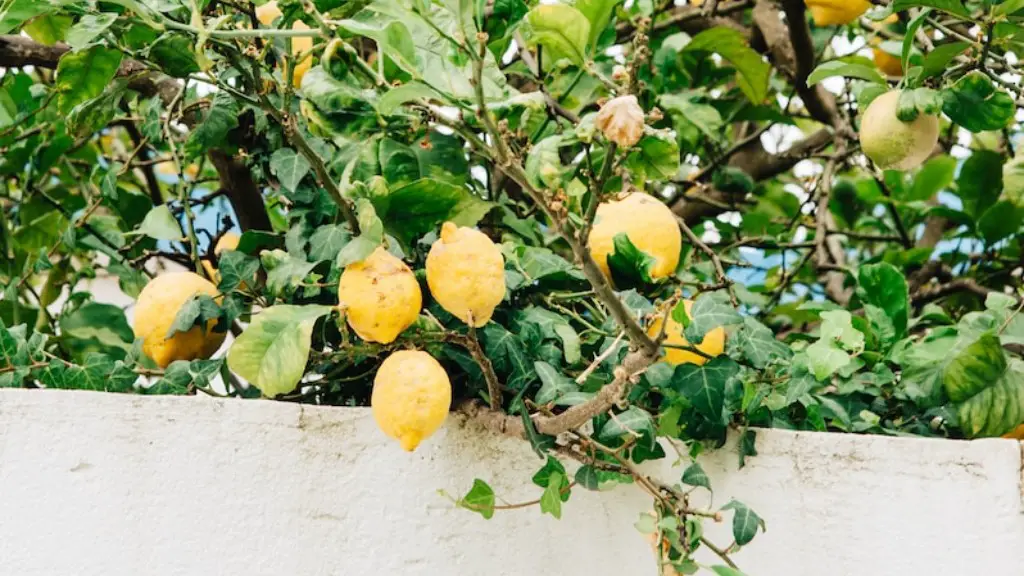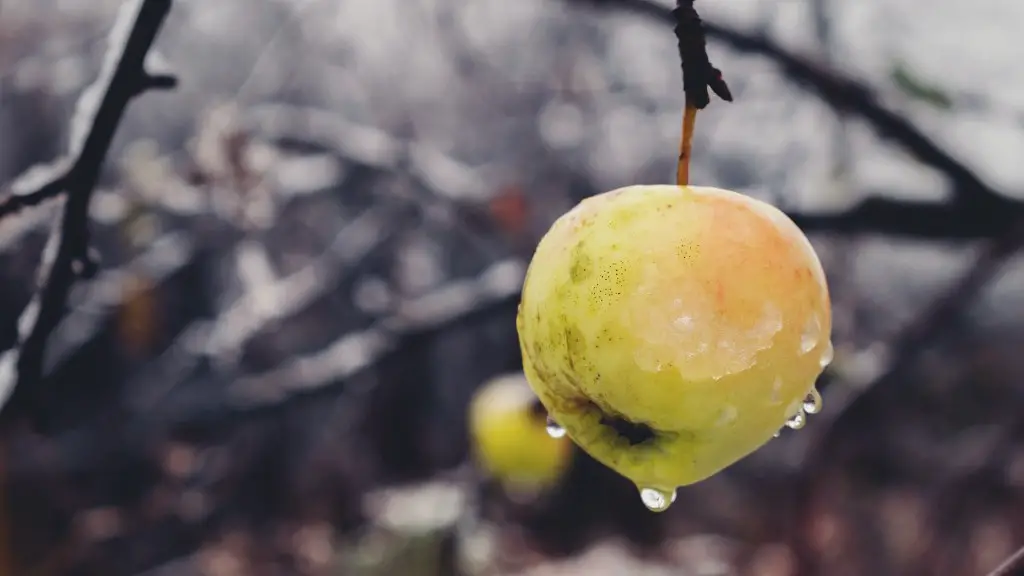Lemons are among the most popular fruits in the world, prized for their bright yellow colour and acidic flavour. But why do some lemons turn black on the tree? It turns out there are several possible explanations.
The first is that the lemon fruit has been exposed to too much heat. Lemons are naturally very heat-sensitive, and when exposed to temperatures above 28°C for extended periods of time, the fruit begins to take on a darker hue. This phenomenon is known as fruit tanning, and is seen in some other citrus fruits as well.
The second possible cause is known as lemon tree blight. It is a fungal infection that attacks the tree’s leaves and causes them to turn black. If left unchecked, this disease can spread to the lemons and cause them to blacken. To prevent this from happening, regular monitoring and treatment of the tree is required.
A third potential cause of black lemons is mechanical damage. When the tree is exposed to strong winds or other external forces, it can cause the thin outer skin of the fruit to break and bleed. Over time, the damaged area turns black, giving the lemon an unusual colour.
The fourth possible explanation is a lack of water or a wide pH variance in the soil. Lemons require a lot of water to grow and stay healthy, but too little can cause the fruit to age prematurely and turn black. Similarly, if the pH of the soil is too high or too low, it can have a detrimental effect on the lemons and cause them to darken.
While none of these possible explanations are definitive, it is clear that there is no single answer as to why some lemons turn black on the tree. However, with proper care and attention, fruit tanning, tree blight, mechanical damage and incorrect soil conditions can all be prevented.
Genetic Mutations
A fifth possible explanation for black lemons could be genetic mutations. Genetic mutations are changes that occur in the DNA of a species, resulting in new and unexpected characteristics. In the case of lemons, a mutation could lead to the fruit turning black before it can ripen.
In some cases, a genetic mutation is caused by environmental factors, such as exposure to certain chemicals or radiation. Alternatively, mutations can occur naturally over time due to random errors in DNA copying or damage to the genetic material.
Genetic mutations in lemons can have a very wide range of effects, from minor visual changes to complete changes in the fruit’s characteristics. In the case of black lemons, the genetic mutation would most likely affect the colour of the fruit. As mutations rarely occur in a single individual, it would not be very common to find a tree full of black lemons.
It is important to note that genetic mutations are usually passed on from generation to generation, which means that a tree with one black lemon could potentially produce more black lemons, depending on the mutation. This would explain why some lemon trees only have a few black lemons, as the mutation has not been propagated through the entire tree.
While genetic mutations may be a possible explanation for black lemons, it is difficult to definitively say without more research into the phenomenon.
Bacteria and Fungi
A sixth possible explanation is the presence of bacteria or fungi in the lemon tree. Bacteria and fungi are microorganisms that have the ability to infect the fruit and turn it black. They can enter the tree through physical wounds or via contact with contaminated soil.
Some bacteria and fungi are more likely to cause blackening of the fruit, such as Colletotrichum acutatum and Lasiodiplodia theobromae. These microbes can cause dark spots and rings on the skin of the lemons and eventually cause the entire fruit to turn black.
Bacterial infections can be treated with specialized fungicides and bactericides, while fungal infections require more targeted treatments. In some cases, simply removing the infected fruit may be enough to prevent the disease from spreading to the rest of the tree.
It is important to note that infections can also lead to other symptoms, such as premature ripening or cracking of the skin. Therefore, it is important to carefully identify and treat any suspicious trees as soon as possible.
While it is possible that bacteria or fungi could be responsible for black lemons, there is no definitive evidence to prove this theory.
Other Factors
The seventh possible cause of black lemons could be other factors, such as nutrient deficiencies in the soil or adverse weather conditions. Nutrient deficiencies, such as a lack of calcium or magnesium, can cause the fruit to become discoloured and age prematurely. Similarly, extreme heat or cold can damage the thin outer skin of the lemon and cause it to turn black.
In addition, some lemon varieties are more prone to blackening than others. For example, the Meyer lemon is known to turn black more easily than other varieties, making it a poor choice for long-term storage.
The cause of black lemons may also be due to a combination of factors. It is possible that a combination of heat, nutrient deficiencies, mechanical damage, and genetic mutations could all contribute to the discolouration.
As with the other possible explanations, it is difficult to prove this definitively without further research.
Pathogens
An eighth possible explanation for black lemons is the presence of pathogens, such as virus or molds. While pathogens are much less common than bacteria or fungi, they can still cause serious damage to the fruit. Pathogens can enter the tree through physical wounds or contact with contaminated soil.
Examples of pathogenic organisms include Xanthomonas axonopodis, Erwinia amylovora, and Colletotrichum gloeosporioides. These pathogens can cause discolouration, cracking of the skin, and premature ripening of the fruit. If left unchecked, the damage can become so severe that the fruit turns completely black.
To prevent such damage, regular monitoring of the tree is necessary. Any suspicious trees should be managed as soon as possible to prevent the pathogen from spreading to other parts of the tree.
Again, while pathogens may be a possible explanation, it is difficult to say definitively without further investigation.
Soil Chemicals
The ninth and final explanation for black lemons could be the presence of certain chemicals in the soil. In particular, the presence of phenolic compounds, such as tannins, can cause the lemons to darken. If the soil is highly acidic, the tannins can reach the fruit and cause discolouration.
In addition, certain herbicides, fungicides, and pesticides can also cause the lemons to darken, although this is less likely if the chemicals are applied correctly and in appropriate amounts.
Similarly, the presence of metallic ions, such as Fe3+, Cu2+, and Mn2+, can also cause discolouration, as they are able to interfere with the plant’s normal metabolism and cause discolouration.
The presence of these chemicals should be monitored regularly to ensure that any negative effects are minimized. In addition, frequent irrigation can help to flush out any excess or harmful chemicals.
It is unclear whether or not soil chemicals are responsible for the blackening of lemons, as there is no definitive evidence to prove this.





